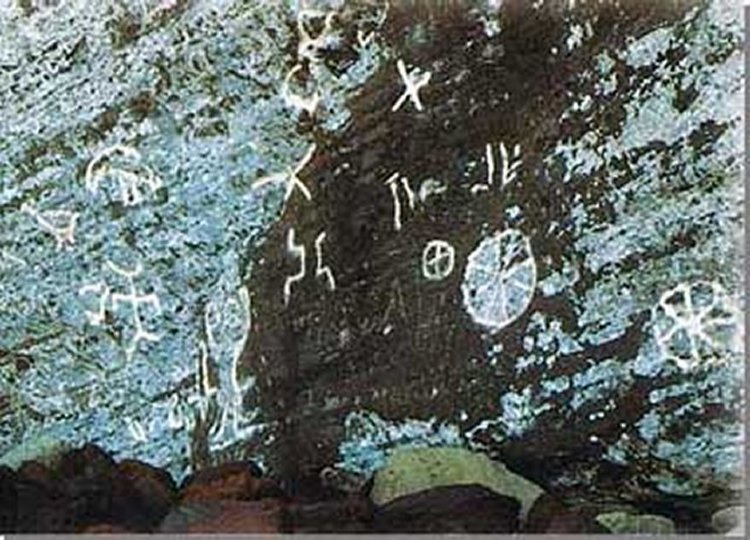Binary System Was Used By Ancient Polynesians 1,000 Years Before The Concept Of A Computer Was Introduced
A. Sutherland - AncientPages.com - Researchers say that our binary system is nothing but a re-invention based on ancient knowledge that existed centuries before the concept of a computer.
 1827 depiction of Tahitian pahi double-hulled war canoes. Engraved by Fumagalli. Plate N° 86; after an earlier artist. source
1827 depiction of Tahitian pahi double-hulled war canoes. Engraved by Fumagalli. Plate N° 86; after an earlier artist. source
When the German mathematician Gottfried Leibniz demonstrated the advantages of the binary system for computations as early as 1703, he laid the foundation for computing machines.
However, Leibnitz was not the first person to use binary numbers.
Researchers in Norway made this astonishing discovery after studying the language of the tiny Pacific island of Mangareva in French Polynesia. The residents of the island of Mangareva in French Polynesia were using a hybrid binary-decimal system before 1450.
One of two number systems traditionally used on Mangareva had three binary steps superposed onto a decimal structure.
The Mangarevan invention of binary steps, centuries before their formal description by Leibniz, attests to the advancements possible in numeracy even in the absence of notation and thereby highlights the role of culture in the evolution of and diversity in numerical cognition.
"Polynesian seafarers left Mangareva around AD 800 in search of quality stone for vital tools and found success on Pitcairn. Trade flourished between the islands, settlers made rough stone gods, carved human, animal, and geometric images on rock canvasses, created burial sites, and left many artifacts. The Bounty mutineers arrived in 1790 and found their temple platforms, petroglyphs, and stone tools giving evidence (and confirmed by Marshall Weisler) that Pitcairn had formerly supported an ancient Polynesian population, most probably from Mangareva..." according to the source.
 Image credit: Pitcairn Islands Philatelic Bureau
Image credit: Pitcairn Islands Philatelic Bureau
More than 300 years ago, the German mathematician and philosopher Gottfried Wilhelm Leibniz demonstrated the computational advantages of a binary number system, or base 2.
Although Leibniz's groundbreaking theory laid the foundation for computing with machines, humans continue to utilize verbal number systems built on base 10, raising the question of whether binary numeration is compatible with human cognition.
Pure binary arithmetic works according to the 'base two' system - '1's and '0's, rather than the conventional 'base 10' - 1,2,3,4,5, etc. - the counting system, which many cultures think of to have used due to counting on ten fingers.
Now, a new discovery questions the origin of the binary system and the date of its invention.
Andrea Bender, a cognitive scientist, and Sieghard Beller at the University of Bergen in Norway looked at the number systems in related Polynesian languages. Their research appears in the Proceedings of the National Academy of Sciences.
They discovered that the Polynesians who arrived in Mangareva over 1,000 years ago used a decimal system, as other Polynesians did. However, by A.D. 1450, the Mangarevans were using a procedure that combined base 10 and base 2. In the Mangarevan language, there are words for the numbers 1 through 9, as with all decimal systems.
For numbers 20 to 80, ancient Polynesians used a binary system with separate one-word terms for 20, 40, and 80.
Ancient Polynesian rock carvings. Image credit: Pitcairn Islands Philatelic Bureau
"Those were probably the numbers that were most frequent in their trading and redistribution systems. For that specific range, it was helpful to have these binary steps that make mental arithmetic much easier.
They did not have a writing or notational system, so they had to do everything in their mind, said Andrea Bender.
This system evolved to help people solve complex mental arithmetic and played a vital role in Mangarevan culture, where people often traded large quantities of goods or offered them as tribute. The Mangarevans used their system to count precious objects, including coconuts, fish, and octopuses.
We have always assumed Leibniz was the first to introduce the binary system. Still, this recent discovery clearly shows ancient people were familiar with binary numbers a very long time ago, and we have only re-invented the method we use today.
Currently, the Mangarevan language risks extinction, and the locals use the Arabic digits and the decimal counting system used in large parts of the world.
Written by – A. Sutherland - AncientPages.com Senior Staff Writer
Updated on November 13, 2022
Copyright © AncientPages.com All rights reserved. This material may not be published, broadcast, rewritten or redistributed in whole or part without the express written permission of AncientPages.com
Expand for referencesMore From Ancient Pages
-
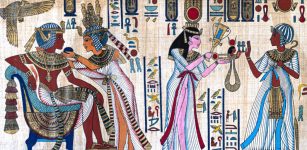 Letters Reveal How Ancient Egyptians Argued With Friends And What Angered Them
Civilizations | Oct 18, 2020
Letters Reveal How Ancient Egyptians Argued With Friends And What Angered Them
Civilizations | Oct 18, 2020 -
 Stone Age Infants Received Care For Nine Hours Per Day From Up To 15 Different Caregivers – Study Informs
Archaeology | Nov 15, 2023
Stone Age Infants Received Care For Nine Hours Per Day From Up To 15 Different Caregivers – Study Informs
Archaeology | Nov 15, 2023 -
 Controversial Theory Suggests Ancient Egyptians Were Founders Of Chinese Civilization
Archaeology | Sep 5, 2016
Controversial Theory Suggests Ancient Egyptians Were Founders Of Chinese Civilization
Archaeology | Sep 5, 2016 -
 On This Day In History: Battle Of Langside Was Fought – On May 13, 1568
News | May 13, 2016
On This Day In History: Battle Of Langside Was Fought – On May 13, 1568
News | May 13, 2016 -
 Unexplained Accounts Of Mysterious Fires – No Traces But It Happened – Part 2
Featured Stories | Aug 6, 2019
Unexplained Accounts Of Mysterious Fires – No Traces But It Happened – Part 2
Featured Stories | Aug 6, 2019 -
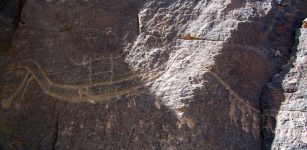 Pre-Pharaonic Petroglyphs Used To Study Egyptian Cult Of The Gods
Archaeology | Mar 15, 2023
Pre-Pharaonic Petroglyphs Used To Study Egyptian Cult Of The Gods
Archaeology | Mar 15, 2023 -
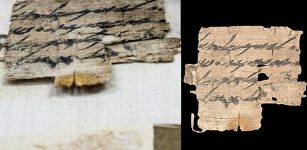 Unique 2700-Year-Old Papyrus With Inscription In Paleo-Hebrew Acquired By Israel From U.S
Archaeology | Sep 7, 2022
Unique 2700-Year-Old Papyrus With Inscription In Paleo-Hebrew Acquired By Israel From U.S
Archaeology | Sep 7, 2022 -
 Archaeological Evidence Ancient Egyptians Visited South America
Ancient Mysteries | Jan 7, 2020
Archaeological Evidence Ancient Egyptians Visited South America
Ancient Mysteries | Jan 7, 2020 -
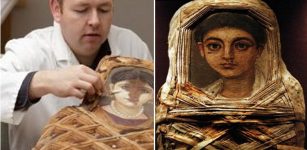 Unexpected discovery of hidden color in ancient mummy portraits
News | Aug 27, 2015
Unexpected discovery of hidden color in ancient mummy portraits
News | Aug 27, 2015 -
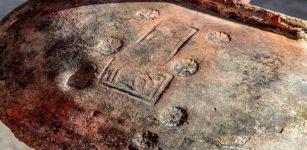 2,500-year-old Saka settlement found in Lake Issyk-Kul: could this be where St Matthew is buried?
Civilizations | Sep 4, 2015
2,500-year-old Saka settlement found in Lake Issyk-Kul: could this be where St Matthew is buried?
Civilizations | Sep 4, 2015 -
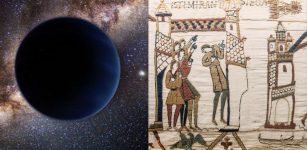 Famous Bayeux Tapestry May Solve The Planet Nine Mystery
Archaeoastronomy | May 5, 2018
Famous Bayeux Tapestry May Solve The Planet Nine Mystery
Archaeoastronomy | May 5, 2018 -
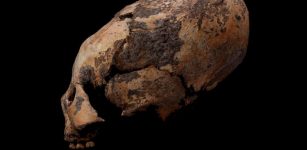 Elongated Skulls: Did Intentional And Intriguing Ancient Tradition Originate In China?
Archaeology | Jul 5, 2019
Elongated Skulls: Did Intentional And Intriguing Ancient Tradition Originate In China?
Archaeology | Jul 5, 2019 -
 Amazing ‘Sigiriya’- ‘Lion Rock’ Fortress In Sri Lanka With Frescoes, Mirror Wall And Miniature Gardens
Civilizations | Jan 4, 2019
Amazing ‘Sigiriya’- ‘Lion Rock’ Fortress In Sri Lanka With Frescoes, Mirror Wall And Miniature Gardens
Civilizations | Jan 4, 2019 -
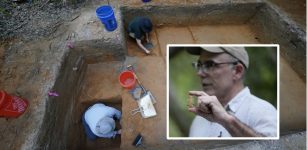 12,000-Year-Old Artifacts In Louisiana Saved By Scientists
Archaeology | Jul 18, 2023
12,000-Year-Old Artifacts In Louisiana Saved By Scientists
Archaeology | Jul 18, 2023 -
 Fascinating Altamura Man – One Of The Most Complete Neanderthal Skeletons Ever Discovered
Featured Stories | Jul 15, 2022
Fascinating Altamura Man – One Of The Most Complete Neanderthal Skeletons Ever Discovered
Featured Stories | Jul 15, 2022 -
 First Known Depiction Of The Biblical Heroines Deborah And Jael Unearthed On 1,600-Year-Old Mosaics
Archaeology | Jul 6, 2022
First Known Depiction Of The Biblical Heroines Deborah And Jael Unearthed On 1,600-Year-Old Mosaics
Archaeology | Jul 6, 2022 -
 Horrible Ancient Massacre On The Island Of Chios Led To Greek Independence
Featured Stories | Jun 29, 2018
Horrible Ancient Massacre On The Island Of Chios Led To Greek Independence
Featured Stories | Jun 29, 2018 -
 Scientists Suggest Neanderthals And Modern Humans Should Be Classified As Separate Species
Evolution | Dec 6, 2024
Scientists Suggest Neanderthals And Modern Humans Should Be Classified As Separate Species
Evolution | Dec 6, 2024 -
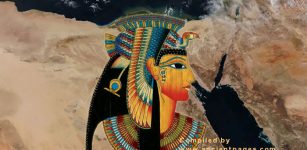 Effects Of The Volcanic Eruption In Alaska Rippled Through Ancient Egypt During Cleopatra’s Reign
Archaeology | Jul 26, 2022
Effects Of The Volcanic Eruption In Alaska Rippled Through Ancient Egypt During Cleopatra’s Reign
Archaeology | Jul 26, 2022 -
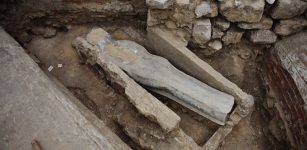 Mysterious Leaden Sarcophagus Found Under Notre Dame Will Be Opened
Archaeology | Apr 17, 2022
Mysterious Leaden Sarcophagus Found Under Notre Dame Will Be Opened
Archaeology | Apr 17, 2022

